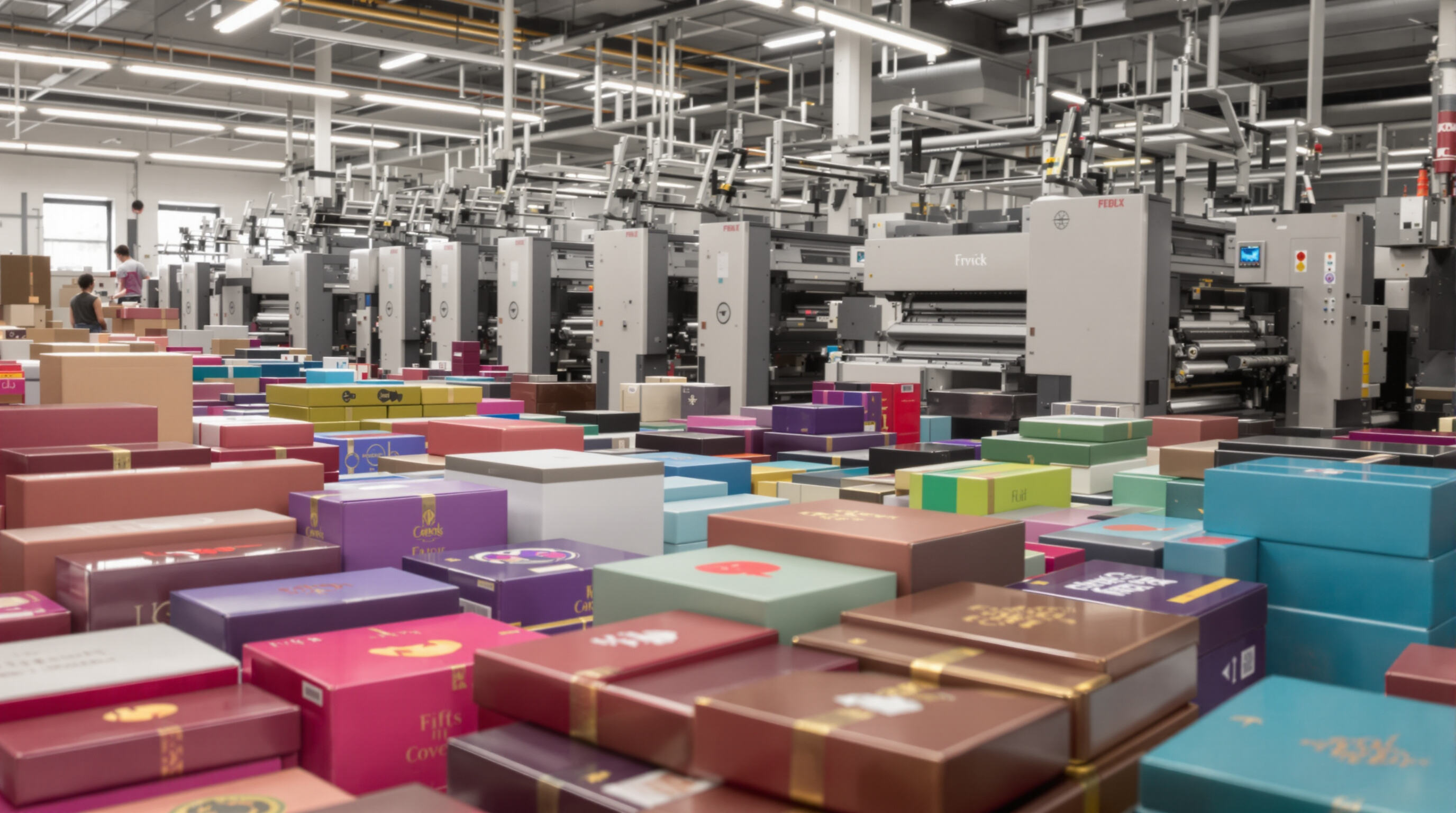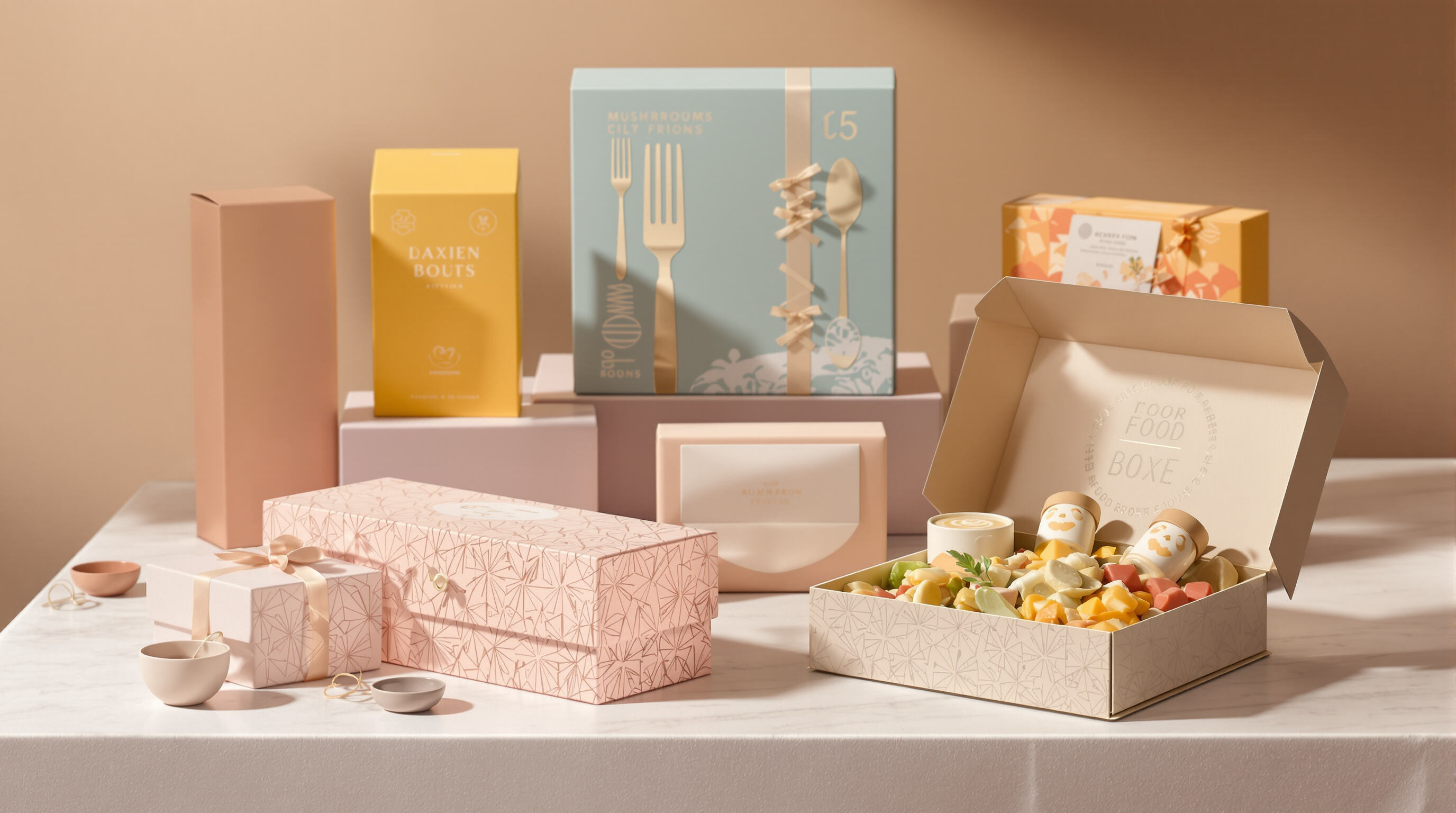Understanding the Role of Customized Gift Boxes in Food Packaging
The Rise of Customized Gift Boxes in Modern Food Gifting Trends
The market for custom food packaging has really taken off since 2020, jumping around 72% as people start caring more about unique gifts they can give friends and family. Market research indicates most consumers, roughly two thirds, actually want to shell out extra cash for those fancy gift boxes with company logos printed all over them. And when brands go all out with holiday themed packaging? That stuff gets noticed. Social media metrics tell us these special edition packages generate about triple the usual interest compared to regular packaging options. What we're seeing now is that opening these gifts has turned into something of a performance art. People love posting pictures of their beautifully wrapped treats online, making it a prime opportunity for companies to get seen by lots of potential customers at once.
How Food Packaging Design Shapes Consumer Perception and Unboxing Experience
The way products are packaged really affects what people buy these days. Studies show around 8 out of 10 shoppers think better printed designs mean better quality inside. Brands are starting to get this too. When packages have those fancy touches like raised logos or that special matte finish, customers remember them about 40% more often. Colors matter a lot too. Think about it – most bread packages use warm yellows and reds while chocolate boxes tend toward cooler blues and purples. This isn't just random. The right colors help products stand out on store shelves and create pictures worth sharing online, which means free advertising when folks snap photos for their Instagram feeds.
Balancing Visual Appeal with Functional Protection in Custom Food Packaging
Good packaging does two main things at once it protects what's inside and grabs attention on store shelves. Take materials such as poly coated board for instance these stop grease and moisture from getting through but still let printed designs stay sharp and clear. Then there are those triple layer laminates they keep colors looking vibrant even when packages go through different temperatures during shipping. When manufacturers combine strong protection with eye catching visuals, products stay fresh longer and customers notice them more easily. According to FoodTech Journal from last year, stores actually see around a 34 percent boost in sales when they use this kind of packaging strategy.
Top Printing Techniques for High-Quality Customized Gift Boxes

Offset printing: Precision and consistency for large-volume branded packaging
Offset printing remains the industry standard for high-volume runs, capable of producing up to 10,000 units with 99.8% color consistency (2023 Packaging Efficiency Report). It excels at rendering fine details and gradients on coated paperboard, making it ideal for seasonal food gift boxes requiring uniform branding across large batches.
Flexography: Efficient printing on diverse food packaging materials
Modern flexographic presses achieve 98% ink adhesion on challenging substrates like kraft paper and corrugated board (2024 Flexible Packaging Study). Using water-based inks and rapid-drying technology, this method cuts production time by 40%, offering a cost-effective solution for organic snack and artisanal food packaging.
Digital printing: Enabling personalization and small-batch production
Digital printing is now used by 62% of brands for orders under 500 units (2024 Food Packaging Trends Report), thanks to its ability to incorporate variable data—such as recipient names or limited-edition messaging—without setup delays. With 97% Pantone color accuracy, it's particularly valuable for holiday collections and regional promotions.
Enhancing visual impact with CMYK accuracy and specialty coatings
| Color System | Best Use Case | Accuracy | Cost Factor |
|---|---|---|---|
| CMYK | Full-color photographic imagery | ±2% | $0.08/box |
| Pantone Spot Colors | Brand-specific color matching | ±0.5% | $0.15/box |
Finishes like soft-touch lamination and UV spot coating elevate perceived value by 73% (2024 Unboxing Experience Study). Meanwhile, food-safe aqueous coatings provide scratch resistance and remain fully recyclable, aligning performance with sustainability.
Ensuring Safety and Compliance in Food Packaging Printing
Using Food-Grade Inks to Prevent Contamination and Ensure Safety
Selecting food-grade inks is critical—92% of contamination incidents in packaging have been linked to non-compliant printing materials (FDA enforcement reports, 2023). Modern inks meet FDA 21 CFR 73 standards, using plant-based pigments and water-based carriers to eliminate heavy metals while delivering vibrant, durable color.
Meeting Global Standards: FDA, EU, and ISO Compliance for Printed Packaging
Manufacturers must comply with a complex landscape of regulations, including EU 1935/2004 migration limits and ISO 22000:2018 food safety protocols. BRCGS Packaging Standard Issue 6 (2024) now mandates quarterly testing of printed surfaces that contact food, with 84% of global retailers requiring third-party certification from suppliers.
Understanding Ink Migration Risks and Avoiding Non-Compliant Materials
While UV-cured inks reduce migration risks, a 2023 Material Safety Study found 18% of samples exceeded allowable limits after prolonged storage. Advanced barrier coatings and careful selection of PCR (Post-Consumer Recycled) materials help prevent chemical transfer, supporting both safety and sustainable packaging goals.
Material and Substrate Considerations for Optimal Print Results
Choosing the Right Board Types (SBS, Poly-Coated) for Durability and Print Quality
What kind of material we choose really impacts how things look and work in practice. Take Solid Bleached Sulfate boards for instance they just print better plain and simple. Tests from last year showed these boards actually produce colors that pop about 24% more vibrant compared to what comes out of recycled materials according to the Food Packaging Safety Council report. Then there are those poly coated options which stand up much better against moisture and oil stains. That makes them great for packaging chocolates or pastries without worrying about ink smearing. Plus the colors stay aligned properly during printing even when working with standard four color processes.
| Material | Print Clarity | Moisture Resistance | Ideal Use Cases |
|---|---|---|---|
| SBS Board | ★★★★★ | ★★★☆☆ | Luxury confectionery boxes |
| Poly-Coated Board | ★★★★☆ | ★★★★★ | Oily snack packaging |
Overcoming Printing Challenges on Porous, Non-Porous, and Curved Surfaces
Printing on curved surfaces requires precision digital systems that maintain alignment within 0.3mm. For porous materials like recycled kraft paper, solutions include UV-curable inks, pre-coating treatments that reduce ink absorption by up to 40%, and micro-engraved plates designed to accommodate material expansion.
Case Study: Digital Printing on Poly-Coated Boards for Premium Chocolate Gift Boxes
In early 2024, several small batch chocolate makers ran tests using this new 7 color digital print technique on those special FDA approved polymer coated boards. What they found was pretty impressive actually the social media buzz around their packaging went up nearly two thirds when customers posted unboxing videos online. The real game changer? These prints allowed for all sorts of fancy metallic touches and smooth color transitions that just weren't possible before without compromising food safety standards. Plus, getting products ready for market took half the time too about three days instead of the usual two weeks it used to take with traditional offset methods. That kind of speed makes a huge difference in today's fast moving specialty food market.
Boosting Brand Value Through Sustainable and Visually Engaging Design

Strengthening Brand Identity With Strategic Packaging Branding and Design
Customized gift boxes generate 92% higher brand recall when they combine consistent color schemes with distinctive structural design (2024 Packaging Impact Report). Incorporating embossed logos and shape-matched dimensions builds tactile recognition, transforming disposable packaging into lasting brand touchpoints—68% of consumers report reusing memorable food gift boxes for storage or décor.
Adopting Eco-Friendly Inks and Coatings to Meet Sustainability Expectations
UV-curable inks have emerged as a leading eco-friendly option, reducing VOC emissions by 73% versus solvent-based alternatives. Water-based coatings now match the durability of traditional laminates while allowing full recyclability. Brands using plant-derived inks maintain 98% color vibrancy over a 12-month shelf life, meeting both regulatory and aesthetic demands.
Consumer Trend: Demand for Biodegradable Materials With Vibrant, Durable Prints
According to Nielsen research from 2023, around two thirds of people buying gifts these days really care about getting compostable packaging without sacrificing good print quality. Some pretty cool stuff is happening too with new tech allowing companies to digitally print on materials made from mushrooms. These custom gift boxes can actually look amazing with photo quality prints, yet they'll break down naturally somewhere between 45 to 90 days after disposal. For high end food gifts especially, this kind of innovation hits the sweet spot where customers want something that looks luxurious but also feels responsible towards the environment.
FAQs about Customized Gift Boxes in Food Packaging
Why have customized gift boxes become popular in food packaging?
Customized gift boxes have become popular due to their ability to enhance brand visibility and consumer engagement, particularly through social media, and their appeal as unique and personal gifts.
How do printing techniques affect the quality and perception of gift boxes?
Printing techniques like offset, flexography, and digital printing impact the quality of designs, color accuracy, and personalization options, which influence consumer perceptions about the product's quality.
What materials are commonly used for durable and visually appealing food packaging?
Materials such as Solid Bleached Sulfate (SBS) boards and poly-coated boards are commonly used for their print clarity and resistance to moisture, making them ideal for luxury and oily food packaging.
How is sustainability incorporated into food packaging design?
Sustainability is incorporated through eco-friendly inks and coatings, biodegradable materials, and recyclable packaging options that maintain visual and functional integrity.
Table of Contents
- Understanding the Role of Customized Gift Boxes in Food Packaging
- Top Printing Techniques for High-Quality Customized Gift Boxes
- Ensuring Safety and Compliance in Food Packaging Printing
- Material and Substrate Considerations for Optimal Print Results
- Boosting Brand Value Through Sustainable and Visually Engaging Design
- FAQs about Customized Gift Boxes in Food Packaging

